Inorganic Graphene Analogues and Related Materials
C.N.R. Rao
International Centre for Materials Science and Jawaharlal Nehru Centre for Advanced Scientific Research Bangalore 560 064, India.
Date of lecture: 25 August, 10:40-11:20
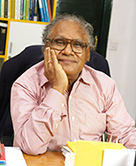
Graphene has been a sensational discovery of recent years. In the last two to three years, there has been effort to prepare graphene-like layered inorganic materials such as MoS2, WS2, GaS and BN. Several methods of synthesis of such nanosheets have been developed. Some of the recent results on few-layer metal chalcogenides and BN will be presented. Specially interesting are some of the physical properties of these nano materials such as magnetism and superconductivity. Transistors and devices have been fabricated with some of the few-layered inorganic materials. A new graphene-like material is Bx Cy Nz. The unusual gas adsorptive properties of high-surface area borocarbonitrides will be discussed. Open-framework materials incorporating graphene have been synthesized and characterized. These materials also show gas adsorptive characteristics. Porous materials wherein graphene layers are connected by organic linkers constitute a novel class of materials. Few-layer species of two-dimensional open-framework hybrid materials are generated by ultrasonication.
Hazy Skies – The Changing Nature of Particulate Pollution
Richard C. Flagan
McCollum/Corcoran Professor of Chemical Engineering and Environmental Science and Engineering
California Institute of Technology Pasadena, California, USA
Date of lecture: 25 August, 11:20-12:00
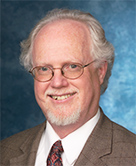
Mass concentrations of particles in the air may seem small (µg/kg of air), but they profoundly impact human health and climate. Even at such low concentrations, inhaled particles trigger respiratory and other diseases, and are linked with increased death rates in cities throughout Europe and North America, regions where efforts to control air pollution have already had some success. Megacities such as Beijing are now suffering much more extreme levels of particulate pollution whose properties are only now being studied, and whose effects have not yet been quantified. However, much has been learned about the nature and origins of the atmospheric particles from studies in other locations around the world, including a number of other highly polluted regions. These studies reveal that the atmospheric aerosol is a heterogeneous mixture: some particles are emitted directly to the atmosphere; others by homogeneous nucleation of the products of atmospheric reactions; mixed particles result from coagulation, condensation, and condensed phase reactions. This growing understanding is being integrated into models of their transport and transformations in the atmosphere to aid in developing strategies for addressing this growing problem.
Transfer of Appropriate Technology by Semi-aerobic Landfill ; FUKUOKA METHOD
Yasushi MATSUFUJI
Fukuoka University, Faculty of Engineering, Professor
Date of lecture: 26 August, 10:30-11:10
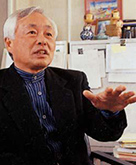
Many countries face the serious issues for Solid Waste Management(SWM) in the Asian region,especially "Landfill".
I will present the history of progress on development of "Fukuoka Method (Semiaerobic Landfill Type)" and the transfer technology of landfills for developing countries,especially China and Asian region, which I have been carring out up the this time.
And also,I will introduce for the case stuy on the improvement and reuse of completed landfills based on Fukuoka Method.
E-waste Management in Japan and other Asia: Toward the Appropriate Management of Hazardous and Resource Potential
Atsushi TERAZONO
National Institute for Environmental Studies
Date of lecture: 26 August, 11:10-11:50
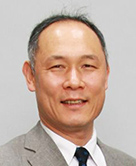
E-waste has both valuable and hazardous substances. It is recommended that valuable substances (precious and rare metals, etc.) are recovered effectively and hazardous substances are controlled without emission.
In order to understand the formal and informal recycling of E-waste in Asia and find the possible improvement, we surveyed the processes of dismantling and recycling of E-waste in detail by site investigations in Asia. We also tried to understand the substance flow and recovery potential of metals in Japan and other Asia.
For improving hazardous and resource potential related to E-waste, we need to consider the collection and recycling system together with appropriate responsibilities and awareness raising.
Feature and Future of Soft Processing(Green Processing) for Advanced Inorganic Materials
Masahiro YOSHIMURA
Promotion Center for Global Materials Research, Dept of Mater.,Sci. and Eng., National Cheng Kung University, Tainan,Taiwan: yoshimur@mail.ncku.edu.tw
Prof. Emeritus. Tokyo Institute of Technology, Japan : yoshimura@msl.titech.ac.jp
Date of lecture: 28 August, 10:30-11:10
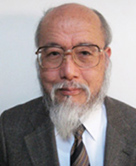
Advanced inorganic materials particularly ceramics have been used in wide area of applications like structural, mechanical, chemical, electrical, electronic, optical, photonic, biological, medical, etc. They have generally been fabricated by so-called high-technology, where high temperature, high pressure, vacuum, molecule, atom, ion, plasma, etc. have been used for their fabrications, because ceramics are difficult in shape forming and fixing due to their intrinsic rigidity and brittleness. Even though nano-sized particles of inorganic materials could be synthesized by low-energetic route, i.e.”soft chemistry” or “green chemistry”, their shape forming and fixing cost energetically and environmentally.
We have challenged to fabricate those advanced ceramics with desired shape/ size/location,etc. directly in low energetic ways using aqueous solutions since 1989 when we found a method to fabricate BaTiO3 film on Ti substrate in a Ba(OH)2 solution by Hydrothermal Electrochemical[HEC] method at low temperatures of 60-200 C. We proposed in 1995 an innovative concept and technology, “Soft Processing” or “Soft Solution Processing,” which aims low energetic (=environmentally benign) fabrication of shaped, sized, located, and oriented inorganic materials in/from solutions. It can be regarded as one of bio-inspired processing, green processing,Eco-processing,etc.. Here their feature and future will be discussed in relation to sustainable society.
Research and Development of Ecomaterials in China
Zuoren NIE
College of Materials Science and Engineering, Beijing University of Technology,professor
Date of lecture: 28 August, 11:10-11:50
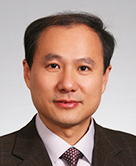
The traditional research and development of materials focus on the improvement of service performance, but often neglect the large amount of energy consumption and pollution emission caused by materials production and related stages (e.g. mining, transportation and so on). To solve this problem, the word “Eco-materials”, as the abbreviation of environmental conscious materials or ecological material, was first proposed in Oct 1990 and had been widely accepted by society and materials industry in recent year. The concept of Eco-materials suggests that the development of materials should not only consider the service performance, but also try best to decrease the environmental impact during the whole life cycle. In this presentation, a brief review of the recent advances in the field of Ecomaterials in China is performed, giving opinions on the current activities and suggesting possible future courses of action. Moreover, as one of the most important basic researches of Eco-material, Life Cycle Assessment (LCA) is an effective tool that not only gives a detailed information about environmental profiles of a material or a product, more importantly, the value of life cycle thinking lies in its ability to provide the decision–making basis for sustainable development, making the products, industry and even the whole industry chain act more in line with the principles of sustainable development. This presentation also provides a review of recent developments of LCA methodology and applications in China, including Chinese materials LCA database (SinoCenter Database), the characterization models of land use and abiotic resource depletion, and also several representative case studies such as civilian buildings and metal production in China.








